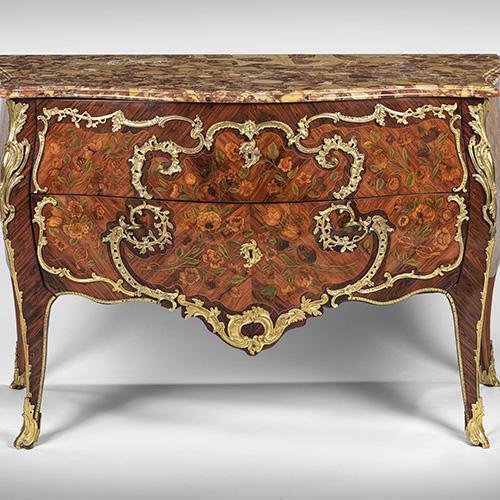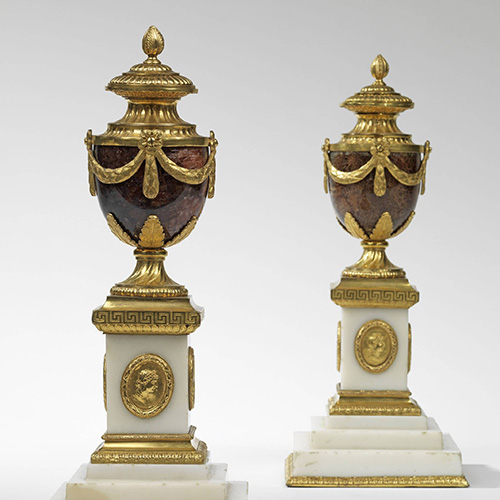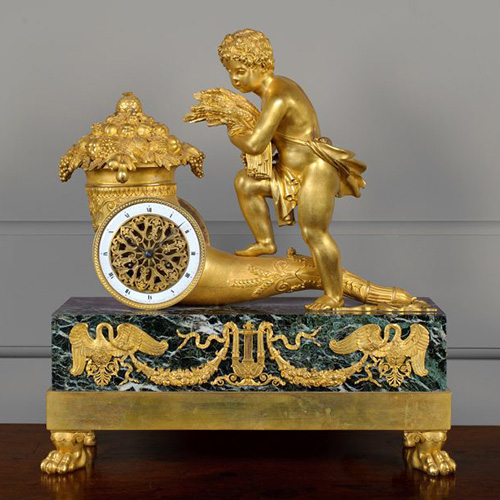

Popularised by cabinet makers of the 18th and 19th centuries, ormolu is the gilding technique of applying a high-carat gold finish to bronze items.
The term derives from the French word ‘moulu’, meaning ‘ground’, which refers to the finely ground gold that is alloyed with mercury in the gilding process.
When heated to high temperature in a kiln, the mercury is driven off, leaving a fine gold coating. This is known in France as ‘bronze doré’, or by its more familiar English name gilt-bronze.
It is difficult to date the origins of the process, but surviving examples of ormolu-style gilding can be seen in Chinese ceramics from as early as the 3rd century BC.
In European culture the ormolu technique was revived in the 16th century by Italian and French makers of the Baroque movement, initially as a means to add gilding to picture frames.
 As the Baroque style gave way to the richly ornamental Rococo movement in the early 18th century, the furniture makers and ébénistes of Paris embraced the application of ormolu, adding a flamboyant finish to their extravagant designs.
As the Baroque style gave way to the richly ornamental Rococo movement in the early 18th century, the furniture makers and ébénistes of Paris embraced the application of ormolu, adding a flamboyant finish to their extravagant designs.
Overnight the new gilt bronze style became all the rage in fashionable town houses and country seats throughout Western Europe, as makers across the continent raced to embrace the popular fashion.
Ormolu gilding was not just limited to cabinet and furniture making. It was applied to almost any household object imaginable from chandeliers, candelabra and clocks to fine crystal and ceramics, sculptures and even fireplace accessories.
Perhaps the leading English exponent was the Birmingham based inventor Matthew Boulton (1728–1809) whose ormolu mounted vases and perfume burners are considered the finest examples in their field.
 The production of ormolu, particularly the process of mercury-gilding, was a highly dangerous process as the fumes produced during kiln-work were extremely hazardous.
The production of ormolu, particularly the process of mercury-gilding, was a highly dangerous process as the fumes produced during kiln-work were extremely hazardous.
Often working in poorly ventilated conditions with little or no respiratory protection, ormolu workers were liable to mercury poisoning, which severely impacts the kidneys and cognitive function.
With life expectancy for an ormolu manufacturer at barely 40 years-old, the French government took action in 1830, banning the use of mercury in gilding. Although, the legislation was so poorly regulated that some workshops continued to use the process well into the 20th century.
Click here for a fine selection of examples currently available from BADA members.

